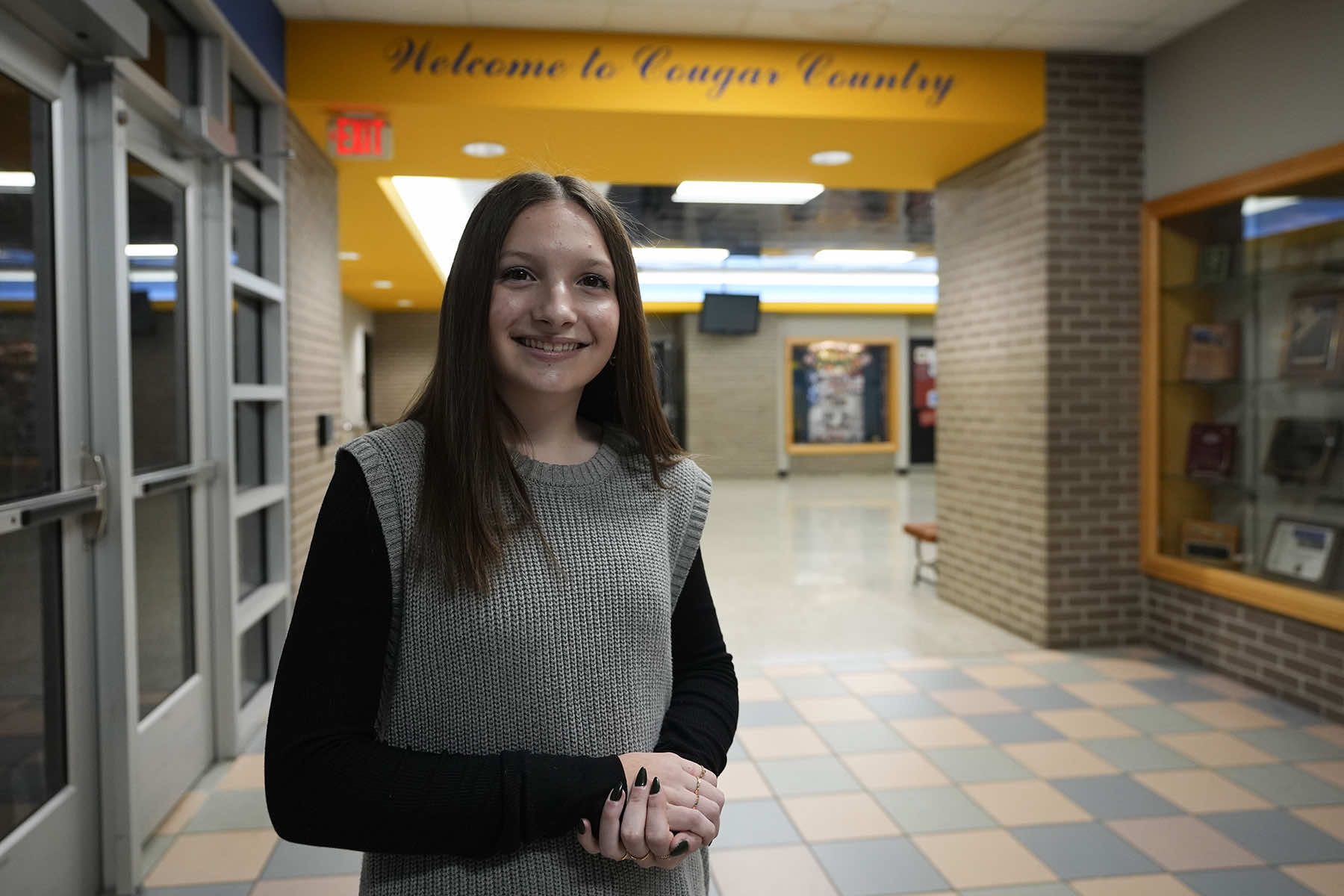For 14-year-old Makenzie Gilkison from suburban Indianapolis, spelling has always been a significant challenge. Due to her dyslexia, simple words like ‘rhinoceros’ might come out as ‘rineanswsaurs,’ and ‘sarcastic’ as ‘srkastik.’ Despite being able to sound out words, the process is so draining that it often hampers her comprehension. ‘I just assumed I was stupid,’ she recalled about her early grade school years. However, assistive technology powered by artificial intelligence has been a game-changer for her, enabling her to keep pace with her classmates. Last year, Makenzie was named to the National Junior Honor Society, crediting a customized AI-powered chatbot, a word prediction program, and other tools that can read for her. ‘I would have just probably given up if I didn’t have them,’ she said.
Artificial intelligence holds immense promise for helping countless students with various visual, speech, language, and hearing impairments execute tasks that come easily to others. Schools worldwide have been grappling with how and where to incorporate AI, but many are fast-tracking applications for students with disabilities. The U.S. Education Department has made it a priority to get the latest technology into the hands of students with disabilities, instructing schools to consider whether students need tools like text-to-speech and alternative communication devices. New rules from the Department of Justice will also require schools and other government entities to make apps and online content accessible to those with disabilities.

While there’s concern about ensuring students using AI are still learning, the technology is being used to summarize jumbled thoughts into outlines, simplify complicated passages, or even translate Shakespeare into common English. Computer-generated voices that can read passages for visually impaired and dyslexic students are becoming less robotic and more natural. ‘I’m seeing that a lot of students are kind of exploring on their own, almost feeling like they’ve found a cheat code in a video game,’ said Alexis Reid, an educational therapist in the Boston area who works with students with learning disabilities. ‘We’re meeting students where they are,’ she added.
Ben Snyder, a 14-year-old freshman from Larchmont, New York, recently diagnosed with a learning disability, has been increasingly using AI to help with homework. ‘Sometimes in math, my teachers will explain a problem to me, but it just makes absolutely no sense,’ he said. ‘So if I plug that problem into AI, it’ll give me multiple different ways of explaining how to do that.’ He appreciates a program called Question AI, which helped him complete a book report outline in 15 minutes—a task that would have taken him an hour and a half otherwise. However, he believes using AI to write the whole report crosses a line. ‘That’s just cheating,’ Ben said.
Schools are trying to balance the technology’s benefits against the risk that it will do too much. According to Mary Lawson, general counsel at the Council of the Great City Schools, if a special education plan sets reading growth as a goal, the student needs to improve that skill, and AI cannot do it for them. However, Paul Sanft, director of a Minnesota-based center where families can try out different assistive technology tools, believes the technology can help level the playing field for students with disabilities. ‘There are definitely going to be people who use some of these tools in nefarious ways. That’s always going to happen,’ Sanft said. ‘But I don’t think that’s the biggest concern with people with disabilities, who are just trying to do something that they couldn’t do before.’
One risk is that AI might track students into less rigorous courses of study. Moreover, because AI is good at identifying patterns, it might figure out a student has a disability. Having that disclosed by AI and not the student or their family could create ethical dilemmas, according to Luis Pérez, the disability and digital inclusion lead at CAST. Schools are using the technology to help students who struggle academically, even if they don’t qualify for special education services. In Iowa, a new law requires students deemed not proficient to get an individualized reading plan, and the state’s education department spent $3 million on an AI-driven personalized tutoring program.
The U.S. National Science Foundation is funding AI research and development, including tools to help children with speech and language difficulties. The National AI Institute for Exceptional Education, headquartered at the University of Buffalo, is working on improving handwriting recognition and speech-to-text technology, particularly for children with speech impediments. While sorting through the numerous programs developed by education technology companies can be challenging for schools, efforts are being made to make it easier for districts to vet what they are buying and ensure it is accessible.
Makenzie wishes some tools were easier to use, as sometimes features are inexplicably turned off, leaving her without them for a week while the tech team investigates. Despite these challenges, her mother, Nadine Gilkison, who works as a technology integration supervisor, sees more promise than downside. In September, her district rolled out chatbots to help special education students in high school, and teachers were emotional upon hearing about the program. ‘Until now, students were reliant on someone to help them, unable to move ahead on their own. Now we don’t need to wait anymore,’ she said.


